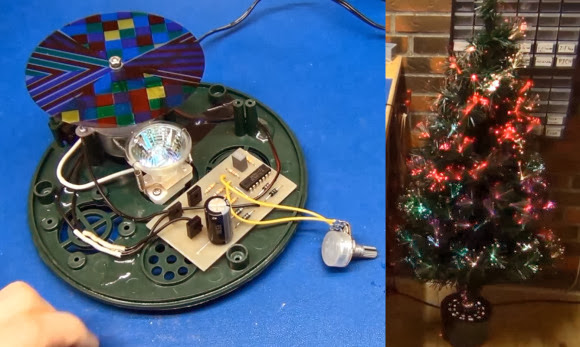It’s Christmas time. You have a string of 50 individually addressable RGB LEDs, what would you do? Well, [Barney] decided to try something different. He’s made a Christmas tree that reflects Twitter’s current sentiments about the holiday.
Wait, what? We admit, it’s a kind of weird concept, but the software behind it is pretty cool. As it turns out Stanford University’s Natural Language Processing Group released the source code for their sentiment analyzer. Unlike a normal sentiment analyzer which assigns points to positive words and negative points for negative words, this one actually uses a deep learning model which builds up a representation of entire sentences based on their structure — only problem? It was designed and trained to analyze movie reviews, not Christmas tweets.
Regardless, it still does the trick (kind of), but, it’s pretty slow. [Barney] has his fastest computer running four instances of the analyzer, which pulls Christmas tweets that have been sorted by the Twitter API — it then analyzes them, assigns the sentiment, and places them in a second queue. He’s using beanstalkd for the queuing and a Raspberry Pi to control the lights. The result is a pretty light display whose colors represent the sentiments of incoming tweets — it’s hard to say if it’s actually successful in reflecting the opinion of the tweets, but it’s a pretty cool concept.
Stick around after the break to see the Christmas Tweet Analyzing Tree in action — say that 5 times fast!
Wait, what? We admit, it’s a kind of weird concept, but the software behind it is pretty cool. As it turns out Stanford University’s Natural Language Processing Group released the source code for their sentiment analyzer. Unlike a normal sentiment analyzer which assigns points to positive words and negative points for negative words, this one actually uses a deep learning model which builds up a representation of entire sentences based on their structure — only problem? It was designed and trained to analyze movie reviews, not Christmas tweets.
Regardless, it still does the trick (kind of), but, it’s pretty slow. [Barney] has his fastest computer running four instances of the analyzer, which pulls Christmas tweets that have been sorted by the Twitter API — it then analyzes them, assigns the sentiment, and places them in a second queue. He’s using beanstalkd for the queuing and a Raspberry Pi to control the lights. The result is a pretty light display whose colors represent the sentiments of incoming tweets — it’s hard to say if it’s actually successful in reflecting the opinion of the tweets, but it’s a pretty cool concept.
Stick around after the break to see the Christmas Tweet Analyzing Tree in action — say that 5 times fast!






